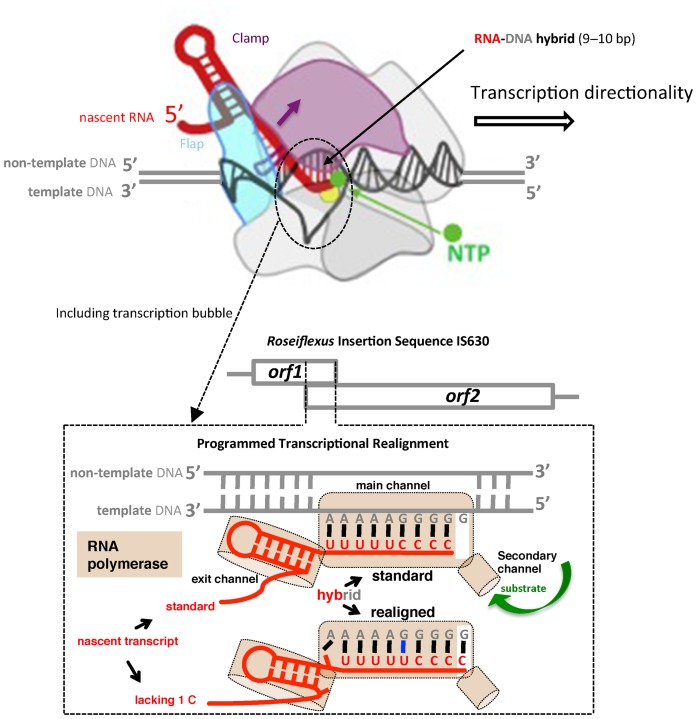Figure 18.
Nascent RNA stem-loop formation stimulates DNA-dependent RNA polymerase slippage. In the top segment (adapted from (614)), the transcription bubble with the unpaired dsDNA and the 9–10 bp RNA–DNA are shown within the dotted ellipse. The position of the polymerase active site is marked in yellow and the incoming NTP substrate is in green. The RNA exit channel is between the Flap domain (blue) and the clamp domain (purple). The lower segment illustrates the nascent RNA stem loop dependent transcription slippage required for synthesis of the transposase of a Roseiflexus insertion sequence (IS). The DNA template strand slippage motif, 3′A5G5, hybrid with the growing RNA U5C4 in the post-translocated state with the catalytic center positioned at the 5th G. Formation of a nascent RNA stem loop adjacent to the hybrid and within the mRNA exit channel, has been proposed to melt the upstream part of the hybrid (99) and to open the polymerase clamp (614). In addition to stimulatory effects on forward realignment of the 3′ end of the RNA with respect to the template, the stem loop can also potentially stimulate the slippage by preventing RNA polymerase backtracking and favoring forward polymerase translocation.

